#vatican 1980
Text
On 17 October 1980, the Queen and Prince Philip were received in private audience by Pope John Paul II at the Vatican.
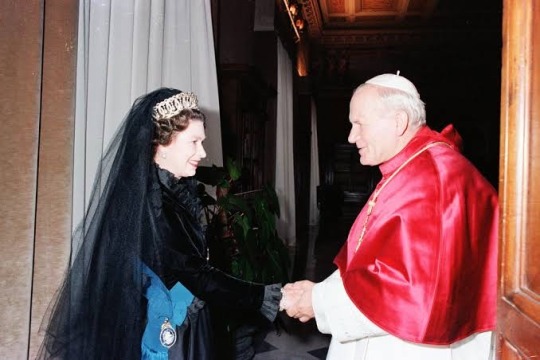

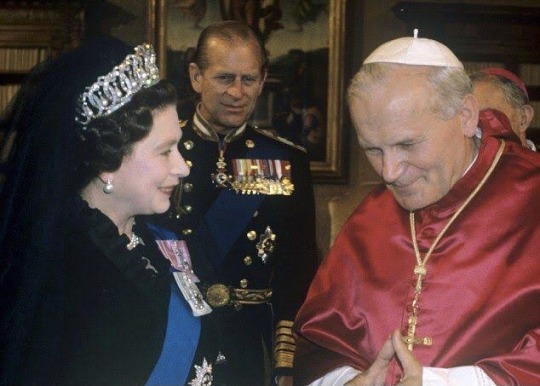
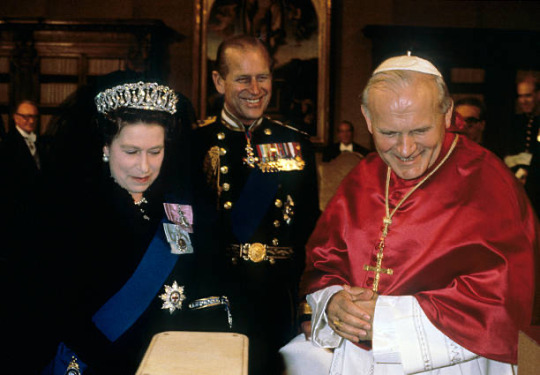


“The two religious leaders - the Pope as Head of the Roman Catholic Church on earth and The Queen as Supreme Governor of the Church of England - found they had much in common, including a mutual interest in ancient sacred documents, and the Pope was delighted to discover that The Queen was not merely being polite but showed an expertise he had not expected.”
Life with the Queen by Brian Hoey
122 notes
·
View notes
Text
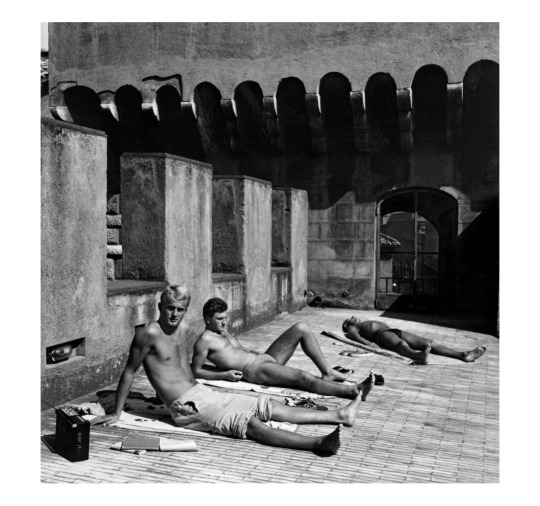


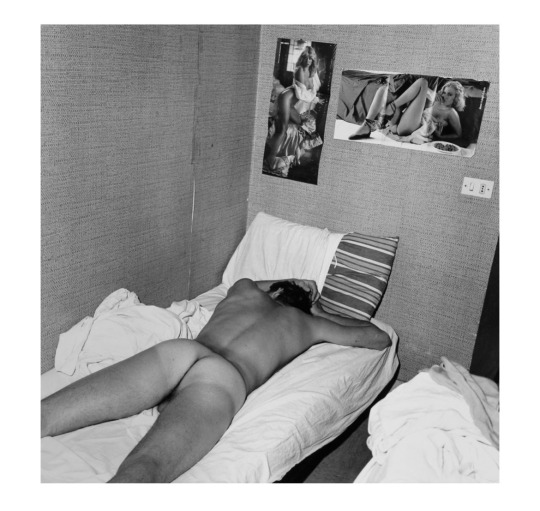
The Swiss Guard, 1981
Photography by Hugues de Wurstemberger
VU l’agence
47 notes
·
View notes
Text
I have pretty big pieces in making, so today I offer y’all some old and new, even middle, sketches with my fave termina trio. What I will offer tomorrow? Who knows…(probably nothing)





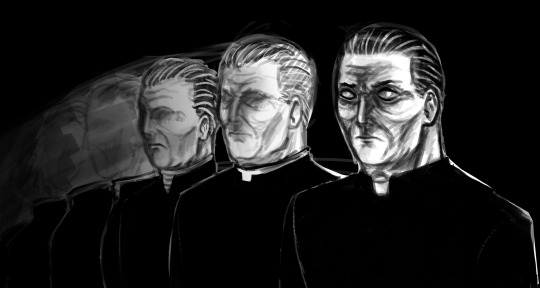
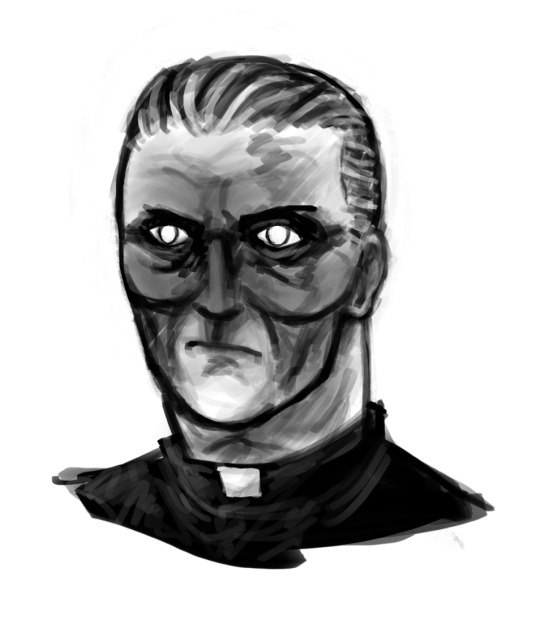
The last one is my head canon for how Domek blushes, the way character blushing is very important ok 😤
#fear and hunger#caligura#father domek#samarie#marina#btw this was the first time I drawn her lolol#Domek in cardinal’s cassock is an au obviously yeah#it happens in 1980s in Vatican and it’s such a tragicomedy I can’t#oh and that piece with him and bottles is depicts my head canon that he is a fucking alcoholic#like it’s his hobby ‘cause he don’t know anything outside church and his life is depressing so what else here to do#and also his a slav dad- ok sorry not funny
48 notes
·
View notes
Text
It’s the middle of the night here and I’m rambling, but I think one of the issues with the Netflix Persuasion is that it seems too strict an adaptation to get away with the scale of its changes.
A lot of people have pointed out that the plot of Persuasion is contingent on a) the social context and b) Anne’s and Wentworth’s specific personalities and relationship. In particular, if you substantially alter who Anne is as a person, the plot wobbles, and the dynamic between the leads becomes baffling. So at that point, you need to also substantially overhaul the plot (and perhaps the setting) to account for the changes in character, or the tension and the basic logic of the story get sucked out.
At that point, it’s easy to end up with something that is too fundamentally divorced from Persuasion to even market as an adaptation of Persuasion. But it’s also possible to continue to engage with the source material in a looser and more indirect way that is still interesting and substantive, like the oft-cited Clueless.
If anything, I tend to prefer adaptations that do this over allegedly faithful ones, because I think the “fidelity” approach often gets caught up in minutia while losing sight of core characterization and themes. Moreover, because adaptations ultimately have to change and add things (esp w/ an author who slides between scene and summary as often as Austen) the contrast between borrowings from the source and new creative material is often extremely glaring.
Personally I have major issues with adaptations frequently characterized as faithful—obviously I can rant about the 1995 P&P or the Peter Jackson LOTR movies all day bc of that reliance on reproducing some aspects of the text in minute detail and then hollowing out a lot of the nuance in the source material in a way that I find reductionist and less interesting. I don’t think loose adaptations are beyond criticism (I certainly do have some issues with stuff in, say, the 2005 P&P and 1999 MP), but I tend to have a bit more charity for them because often they’re interacting with the text in a different way that I find more compelling.
Like ... my favorite TV show is not strictly an adaptation of a particular text, but it overlaps because it’s a historical drama with a very loose approach to the history it’s representing. That show is Showtime’s The Borgias. (And fwiw I despise the supposedly faithful Borgia: Faith and Fear.)
The Borgias is artistically uneven (S3 in particular drifts between spectacular and trash fire) and historically inaccurate, but in a way that still engages with history with clear purpose. Generally the approach is something like “okay, what if the historical propaganda was true, and also was cool, actually, and we strung that stuff together with other things we made up to construct a straightforward plot.”
So like, if you look at something like Juan Borgia’s siege of Forlì in Season 2, which is absolutely critical to his arc in S2 and ultimate downfall, there’s the simplistic response of “that’s inaccurate, he never did that.”
And strictly speaking, it’s true! Historically, he didn’t! So why is it simplistic?
Because the whole thing with him fleeing battle in a cowardly way and getting mocked did happen historically, but it was a different battle against a different family in a different location that didn’t have anything to do with the “ten more sons” thing. So it is engaging with an actual historical event in a way that simply listing “Juan Borgia’s attack on Forlì” as an inaccuracy doesn’t fully account for.
But it’s even more complicated than that, because Caterina Sforza’s defiant response to Juan in the show is actually taken from the historical record, but (allegedly) happened in a completely different conflict that occurred when historical Juan was ... like, ten. So the real question is not “why did they invent the ‘ten more sons’ thing?” it’s “what are they trying to achieve by fusing together these different historical accounts?”
On top of that, it’s worth pointing out that the historical rumor that Caterina refused to negotiate with the declaration that she had the means to make more sons quite possibly never happened, at least in that way, and was spread to make her look unwomanly, a heartless mother etc and part of general misogynistic propaganda against her. So maybe it’s still inaccurate at its core.
But the question for me is, what is the show doing with that narrative? And I think what’s really interesting is that Juan, a Borgia, is clearly “the bad guy” in this scenario, and the show is pretty clear that Caterina is deeply upset as a mother, but too hardcore and intelligent to play Juan’s stupid torture games. Her defiance is framed not as something that de-legitimizes her but as, while painful for her, very deeply cool. So, ultimately the rumor is turned on its head to make her more, not less, sympathetic and admirable.
You don’t even have to like the reinforcement of that particular myth about Caterina, but just dismissing the set piece as inaccurate because Juan Borgia didn’t actually attack Forlì leaves out a lot of how the show is interacting with the historical record. The defensive “it’s not history, it’s just a show, and it works for the show’s story” also leaves out a lot of how the show is engaging with the historical record, though I think it’s worth talking about how the siege of Forlì does or does not serve the show’s story as well as how it’s participating in historical narratives.
At any rate, loose adaptation can engage with source material in kind of messy, complex ways that the accurate vs inaccurate dichotomy fails to really capture. This form of engagement is not inherently a good thing, but I think it highlights the ways in which it’s important to look at what an adaptation or historical drama or whatever is trying to achieve through its approach to its source material, whether we think that’s a worthwhile goal, and whether it actually succeeds in accomplishing it.
The issue with Netflix Persuasion isn’t just change = bad, blahblah Austen purists whatever, but that the purpose and results of a lot of its changes seem to reflect a contempt for both its source material and its modern audience without really saying anything very interesting about either. It’s in this weird zone between “went too far” and “didn’t go far enough” that mostly just results in something that trades on Austen’s reputation, but is mediocre as an adaptation of her novel, yet doesn’t seem to be particularly compelling in its own right as a separate piece.
#anghraine babbles#long post#austen blogging#austen fanwank#persuasion 2022 critical#political shenanigans and codependent siblings#magnificent bastards of the vatican#adaptation#andrew davies critical#anghraine's meta#also thinking of the 1980 p&p and how it's both more and less 'accurate' than the 1995 and certainly worse tv#but which i like a lot better because even when i disagree w/ its takes on the characters i find its approach to them /interesting/#like the ott unpleasant mr bennet is not exactly my reading but i think it's an interesting choice#where virtually every other adaptation softens him from the novel
73 notes
·
View notes
Text



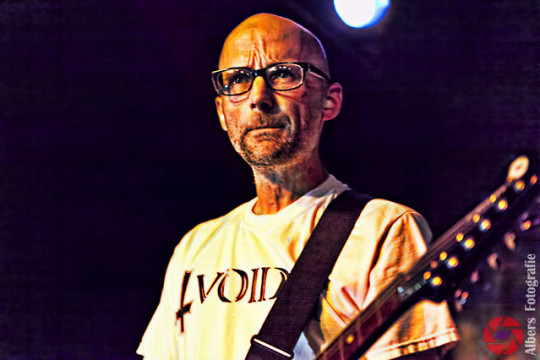

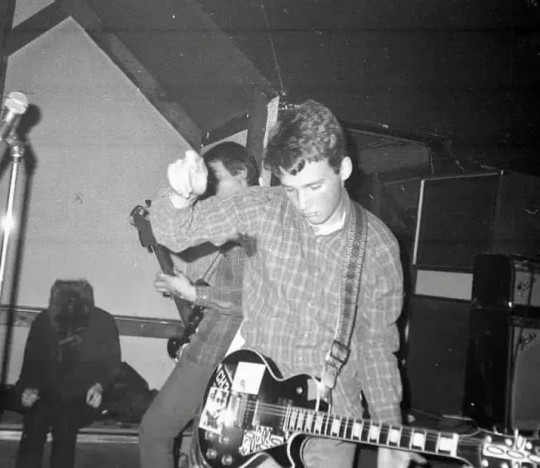
ONCE A HARDCORE PUNK, ALWAYS A HARDCORE PUNK -- MOBY @$!*#&% RULES!!
PIC(S) INFO: Spotlight on Darien, Connecticut hardcore punk band the VATICAN COMMANDOS (with MOBY on guitar) playing a West Coast reunion show on February 5, 2011, at The Dragonfly in Hollywood, Los Angeles, CA, with D.I. 📸: Dave Rawe, Michael Albers, various.
EXTRA INFO: Two shots of a younger Moby (then Richard Hall) with a VC band member and another shot from a 1983 VC show is also included.
Sources: www.flickr.com/photos/albers_fotografie/5488861374 (Flickr 4x), Punknews, various, etc...
#VATICAN COMMANDOS#80s hardcore#Richard Hall#80s hardcore punk#MOBY Artist#American hardcore punk#Los Angeles#Connecticut#Punk gigs#Punk photography#Photography#Punk rock#Hit Squad for God 1983#THE VATICAN COMMANDOS band#80s#American hardcore#VOID#VOID band#VATICAN COMMANDOS band#Band Tee#DC hardcore#Hardcore punk#MOBY#80s punk#1980s#Hit Squad for God#1983#THE VATICAN COMMANDOS#Guitarist
0 notes
Text





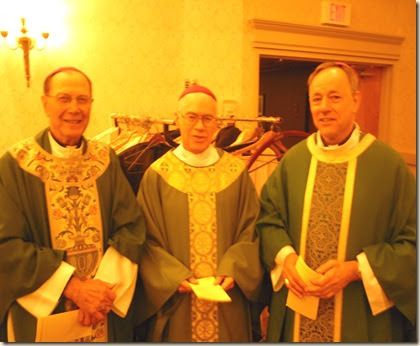


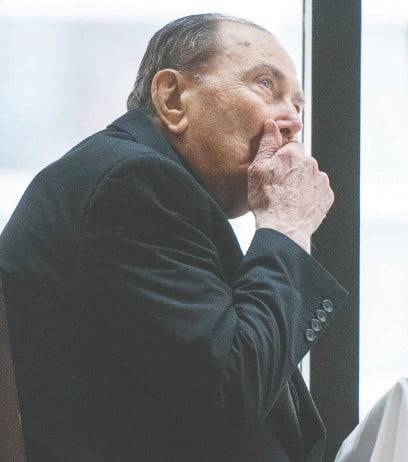
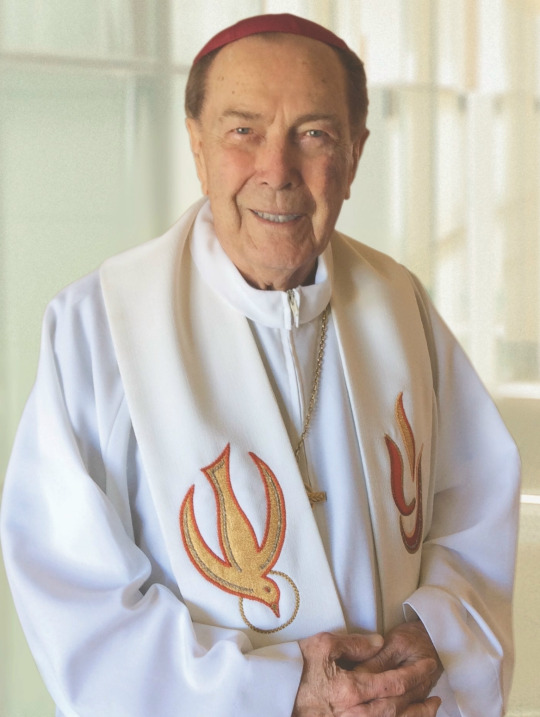
R.I.P. Archbishop Adam Exner.
0 notes
Photo
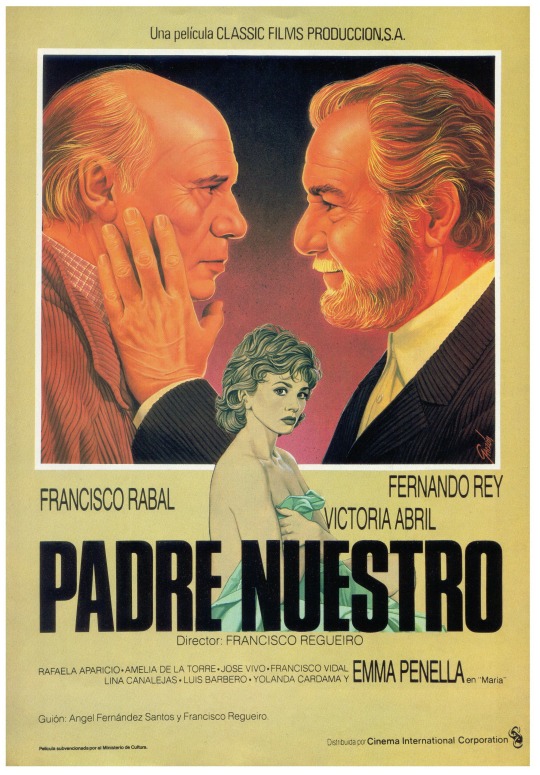
0 notes
Note
i kknow this may not be your area of knowledge but do you know why the pope is suddenly saying this stuff re: marxism? hes always been progressive and genuine in his beliefs (same gender stuff, the lunch w the drag queens, etc.) but to outright say "we should befriend communists" is surprising to me. power play? old age? hes also a communist? idk
i was raised catholic and spend most of my time at a jesuit college! it's a complicated issue, but i'll do my best. edit: i also want to say that i am both pro-francis and generally very unhappy with the church in general, so i've tried to be as objective as i can.
pope francis is, first, argentinian, and second, a jesuit. as a south american he knows liberation theology, a marxist-based theology of the poor which developed in south america during the 1980s. because of its association with marxism liberation theology was treated with huge suspicion by the catholic church. cardinal ratzinger, later benedict xvi, wrote a fairly nasty castigation of liberation theology in the 80s- if i find it i'll link it.
this is the context, i believe, of his comments on marxism: it's not only a home ideology for francis, it's more necessary than ever in our current social climate. francis has always been what most catholics would consider a liberally minded pope, he exhibits that fabulous tenet of catholic social teaching called "the preferential option for the poor," and everything he has done during his papacy gestures to this, including his encyclical on climate change, laudato si, and his recent moves towards affirmation of gay and trans people being baptized. even his tour of canada to make formal apologies for residential schools came about for similar reasons: it wasn't perfect, but the reason there hadn't been a formal catholic apology prior to francis was because doctrine around papal infallibility dictates that a sitting pope cannot refute or roll back the statements of a previous pope: an apology for the doctrine of discovery and residential schools would have constituted admitting that a previous pope had been wrong, which is tantamount to admitting that god himself is wrong, since the pope is the representative of god and a direct descendent of the apostle peter. doing as much throws the entire church into a very negative light, but francis apologized anyway- which, again, while deeply imperfect is a huge deal within the church, certainly infuriated a lot of conservatives, even if it seems essentially inadequate to non-catholics.
francis isn't a communist, i don't think, but he is good. he's very apart from what constitutes the majority of the catholic magisterium (ordained members of the church- priests, bishops, cardinals, etc)- a kind of internal division developed after vatican ii, where on one hand you had conservatives who preferred traditionalism, the type of leaders who wanted to keep things QT with the reagan administration who was funding mass murder in nicaraugua- that is, at it's core, the primary reason why liberation theology was rejected when it first emerged, why it has been slow to gain traction in the church. ratzinger was a staunch conservative, and john paul ii was less so; leadership in the church goes through cycles where traditionalists are usually followed by more liberal-minded popes, who appreciate vatican ii for the groundbreaking and monumental achievement that it was rather than acting as if it signified a breakdown of religion.
the other thing is francis being a jesuit: i have a lot of jesuit friends, have gotten most of my theological education from jesuits, and applied to a jesuit college for my phd. jesuits are incredibly socially minded, dedicated consistently to social awareness and justice, and less inclined towards enclosure and privation from the world at large than other orders. they are also dedicated to poverty, like franciscans. the jesuit order is not perfect (they still will not allow a women's jesuit order, and they have a dismal track record of colonialism) but francis is the first jesuit pope and this is a huge deal in terms of the type of theology that his leadership embodies as a result. jesuists are not as a monolith liberal-minded and forward thinking, but they are generally more ready to adapt and evolve catholicism to meet contemporary needs rather than maintainig strict adherence to traditional views at the expense of the body of christ- that is to say, the body of all believers, or all whom god loves, which is everyone. incidentally, leonardo boff, one of the fathers of liberation theology, was also jesuit.
this is a pretty and dirty answer to your question but i hope it makes sense- essentially francis is recognizing that the needs of god's people override that of the church, because god's people are the church equally or more than the magisterium is the church, but it is the magisterium who has been preferred historically. but he has surprisingly little room in which to make moves towards this because of canon law and other doctrines. he's doing his best, though, more than i ever thought i'd see: i appreciate and love him deeply.
44 notes
·
View notes
Text
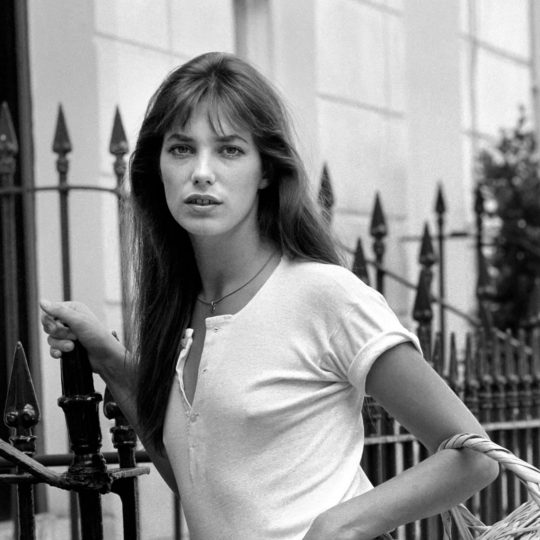
The sultry 1969 hit single Je T’aime … Moi Non Plus was a four-and-a-half-minute distillation of languid Gallic cool, in which a Frenchman, his voice coarsened by Gitanes, is heard billing and cooing with an ecstatically sighing young Englishwoman over the swirling motif of a baroque organ. That man was Serge Gainsbourg; his companion was Jane Birkin, the actor and singer, who has died aged 76. Though Birkin worked with some of the world’s finest film-makers, including Jacques Rivette and Agnès Varda, she knew that Je T’aime … would be remembered above everything else she did. “When I die, that’ll be the tune they play, as I go out feet first,” she said.
Birkin was 21 when she and Gainsbourg met while starring together in the film Slogan (1969). He was 40, and had previously recorded Je T’aime … as a duet with Brigitte Bardot, only for the actor to withdraw permission for it to be released. Birkin had already starred in a 1965 musical, Passion Flower Hotel, scored by John Barry, whom she married that year at the age of 19 and from whom she was divorced in 1968; he was the father of Kate, the first of Birkin’s three daughters. But it was on the duet with Gainsbourg, she said, that for the first time “somebody thought I had a pretty voice”.
She sang her part an octave higher than Bardot. “It gave it a choirboy side that [Gainsbourg] liked a lot,” she said. Rumor's that the vocal track was recorded under the covers during a moment of intimacy were untrue (the couple were standing at separate microphones in a studio in central London) though they did nothing to harm the mythology surrounding a song that was later condemned by the Vatican. “I just remember thinking it was all terribly funny,” she said.
Among the countries that refused to give the song airplay was Britain, where it became the first banned single to reach the top of the charts, as well as the first non-English-language No 1. It was also the lead track on the 1969 album Jane Birkin/Serge Gainsbourg.
Birkin’s life remained inextricably linked to his. They were together for 11 years, and had a daughter, Charlotte, who became a successful singer and actor. Even after they separated in 1980, he continued to write for her, and she went on performing his songs for the rest of her life.
Far from being an adjunct to Gainsbourg’s legend, she possessed her own style, intelligence and attitude. Her wistful beauty was rendered unorthodox by an eager, gap-toothed smile. Her voice was as bewitching as her face: though she lived in France from 1969 onwards, and spoke French fluently, she never shed her breathy, crisply English accent.
She was born in London to Judy Campbell, an actor who had been a muse to Noël Coward, and David Birkin, who was a lieutenant commander in the Royal Navy and a spy during the second world war. His duties included taking British spies across the Channel to France and bringing back stranded airmen and escaped prisoners of war.
Jane was educated at Upper Chine school on the Isle of Wight. At 17 she starred with Ralph Richardson in Graham Greene’s play Carving a Statue; Greene himself had a hand in casting her. Her screen acting career began with a walk-on part in The Knack … and How to Get It (1965) and a controversial nude scene in Michelangelo Antonioni’s Blow-Up, which she agreed to because Barry had told her she wouldn’t dare.
She had a small role in the Warren Beatty caper Kaleidoscope (also 1966), played a model called Penny Lane in the psychedelic curiosity Wonderwall (1968) and starred with Romy Schneider and Alain Delon in the psychological thriller La Piscine (1969). She got on famously with Bardot when they starred together in Don Juan, or If Don Juan Were a Woman (1973). Gainsbourg directed her in a 1976 film named after their hit song; he cast her as a boyish woman who attracts the attentions of a gay man, played by the Warhol regular Joe Dallesandro.
Birkin was tremendous fun in two star-studded Agatha Christie thrillers, Death on the Nile (1978) and Evil Under the Sun (1982). In the cryptic Love on the Ground (1984), Rivette cast her and Geraldine Chaplin as actors drawn into a playwright’s mysterious world. She appeared in two films, The Pirate (1984) and Comedy! (1987), made by her then partner, Jacques Doillon, with whom she had her third daughter, Lou, also a singer and actor. Jean-Luc Godard directed her in Keep Your Right Up (also 1987), while for Varda she played a woman besotted with a 14-year-old boy in Kung-Fu Master! (1988); the film co-starred Charlotte and featured Lou, and was inspired by an idea by Birkin herself.
In the same year, Varda made her the subject of Jane B For Agnès V, in which the actor performed a variety of specially scripted scenes (in one, she was a Stan Laurel type, in another a cockney mother) interspersed with musings on her life. She received the documentary treatment once again when her daughter directed Jane By Charlotte (2021).
Her two most impressive performances came in Bertrand Tavernier’s These Foolish Things, aka Daddy Nostalgie (1990), in which she was moving as a woman trying to repair her relationship with her dying father (Dirk Bogarde); and La Belle Noiseuse (1991), Rivette’s spellbinding four-hour study of a painter (Michel Piccoli) and his new muse (Emmanuelle Béart), in which Birkin played the artist’s wife and former model, who must deal with the indignity of having her younger self literally painted over.
Later films included Alain Resnais’s musical On Connaît la Chanson (1997) and the Merchant-Ivory coming-of-age story A Soldier’s Daughter Never Cries (1998).
In 2002 Birkin was diagnosed with leukaemia, but by 2006 she had made her directorial debut with the autobiographical family drama Boxes, which she also wrote and starred in, along with Chaplin, Piccoli, John Hurt and her daughter Lou. She appeared in Rivette’s final film, Around a Small Mountain (2009), played herself in Hong Sang-soo’s Nobody’s Daughter Haewon, and was reunited with Tavernier for his comedy The French Minister (also 2013).
Her look had been widely applauded in the 1960s, and seemed never to go out of date. In the 80s Hermès introduced a large and exorbitantly priced leather bag, named “the Birkin” in her honour. Fashion journalists in recent years could still be heard celebrating the “Jane Birkin top”, referring to the white lace dress made famous by her in the late 60s. “Real life was what I was best at,” she told Vogue magazine in 2016. “I didn’t have confidence in movie cameras or on stage. But I did have confidence in what I wanted in real life. If I wanted to be barefoot and wear a mackintosh, I would do it. I didn’t give a hoot.”
It was at 40 that she finally discarded her youthful ingénue image and performed her first live concert: “I cut my hair off like a boy, I wore men’s clothes. I only wanted people to hear the music and words. It was fantastic. And it was so frightening. Serge was there and he kept lighting his cigarette lighter to make everybody put their lighters on.” That show was preserved on her 1987 album, Jane Birkin au Bataclan. She continued singing and recording into her old age; among her later albums is Birkin/Gainsbourg: Le Symphonique, from 2017, in which the couple’s songs received new orchestral arrangements.
In 2020 she published Munkey Diaries 1957-1982, containing diary entries addressed to her favourite cuddly toy from childhood, which she can be seen clutching on the cover of Gainsbourg’s 1971 album Histoire de Melody Nelson. She buried the toy with him after his death in 1991.
She is survived by Charlotte and Lou, and six grandchildren, and by her brother, Andrew, and sister, Linda. Kate, a photographer, died in 2013.
🔔 Jane Mallory Birkin, actor and singer, born 14 December 1946; died 16 July 2023
Daily inspiration. Discover more photos at http://justforbooks.tumblr.com
84 notes
·
View notes
Text

Our Lady of Kibeho
Feast day: November 28
Our Lady of Kibeho is the name given to Marian apparitions concerning several adolescents, in the 1980s in Kibeho, south-western Rwanda. The apparitions communicated various messages to the schoolchildren, including an apocalyptic vision of Rwanda descending into violence and hatred, possibly foretelling the 1994 Rwandan Genocide. Our Lady of Kibeho became the first and only Vatican-approved Marian site in Africa.
Prints, plaques & holy cards available for purchase here: (website)
48 notes
·
View notes
Note
which president met the most popes-john paul 2?
Yes, it's Pope John Paul II.
The first incumbent President to meet a Pope was Woodrow Wilson, who met Pope Benedict XV at the Vatican in 1919, so Presidents have really only been meeting with Popes for the past 100 years. So Pope John Paul II basically reigned as Pope for a quarter of the time (26+ years) that Presidents have been meeting with them.
But despite the length of John Paul II's reign, he didn't meet with significantly more Presidents than some of the other Popes. John Paul II met with five incumbent Presidents during his reign: Jimmy Carter, Ronald Reagan, George H.W. Bush, Bill Clinton, and George W. Bush (he also met future President Joe Biden when Biden was a U.S. Senator). Pope Paul VI, who was Pope from 1963-1978, met with four incumbent Presidents: John F. Kennedy, Lyndon B. Johnson, Richard Nixon, and Gerald Ford. John Paul II would have probably met more Presidents if not for the fact that Reagan and Clinton were both re-elected and served the full eight years in office (Bush 43 was also re-elected, but John Paul II died just a few months into his second term).
Here's a full list of which incumbent Presidents met with which Popes:
•Pope Benedict XV [1]: Woodrow Wilson (1919)
•Pope John XXIII [1]: Dwight D. Eisenhower (1959)
•Pope Paul VI [4]: John F. Kennedy (1963); Lyndon B. Johnson (1965 & 1967--a meeting which featured one of my favorite Presidential stories ever); Richard Nixon (1969 & 1970); Gerald Ford (1975)
•Pope John Paul II [5]: Jimmy Carter (1979 & 1980); Ronald Reagan (1982, 1984, & 1987); George H.W. Bush (1989 & 1991); Bill Clinton (1993, 1994, 1995, & 1999); George W. Bush (2001, 2002, & 2004)
[John Paul II also met future Presidents George H.W. Bush during Bush's Vice Presidency and Joe Biden while Biden was a Senator.]
•Pope Benedict XVI [2]: George W. Bush (2007 & 2008); Barack Obama (2009)
[Benedict XVI also met future President Joe Biden during his Vice Presidency.]
•Pope Francis [3]: Barack Obama (2014 & 2015); Donald Trump (2017); Joe Biden (2021)
[Francis also met future President Biden on three occasions during Biden's Vice Presidency.]
Interestingly, Pope Pius IX, who reigned from 1846-1878 -- long before the United States formally established permanent diplomatic relations with the Holy See -- also met four Presidents during his reign (more than any Pope other than John Paul II), but they were all either former or future Presidents. Pius IX met former Presidents Martin Van Buren and Millard Fillmore in 1855 when they visited Rome (separately) and former President Franklin Pierce when he visited Rome in November 1857. And Pius IX met future President Theodore Roosevelt in December 1869 when Roosevelt's family visited the Vatican. Theodore Roosevelt is actually the only person who served as President known to have kissed the ring of a Pope -- even though Roosevelt wasn't Catholic and was only 11 years old. Former President Ulysses S. Grant met Pope Leo XIII in 1878 when visiting the Vatican during his post-Presidential world tour.
#History#Presidents#Popes#Popes and Presidents#Meetings Between Presidents and Popes#Pope John Paul II#Pope Paul VI#Pope Pius IX#Presidency#Papacy#Presidential History#Papal History#Vatican#Presidential Meetings#Papal Audiences
14 notes
·
View notes
Text
Va†ican
In this Horror/Romance IF you play as a paranormal investigator. Set in the 1980's, after a series of unfortunate events you unexpectedly get wrapped up in the dubious affairs of a seemingly cursed rock band known as the Va†ican. Will you be able to save the band and all of the west coast from themselves?
†FEATURES†
†Fully customizable MC Including†
• Pronouns (She/Her, He/Him, They/Them with the ability to customize pronouns to include secondary and/or Neo-pronouns)
• Appearance (Height, Body Type, Facial Features, Skin Color, Eye Color, Skin markings and Hair Color/Length/Texture)
• Background/Origin
• Personality
†Fall in love! or don't.†
†Enjoy the eighties... and being hunted by demons.†
CONTENT WARNINGS
The Va†ican is intended for mature audiences as it will include: Strong language, Use of Alcohol/Drugs, Intense Violence, Sexual Themes, Mentions of Religious Trauma, Gore, Potentially Mental Health related topics and eventually completely optional Sexual Content.
THE BAND
†Pontifex†
-
Stevie St. Cloud
He/Him|24|
-
Lead Vocals, Guitarist & Frontman
-
He's famous, and he LOVES that people know his name. He's brash, loud mouthed and full of himself to the point that it's almost annoying; but he is also the quintessential rockstar. He's ambitious, and has a stage presence thats undeniably breathtaking.
Stevie doesn't like to talk about himself outside of his stage persona and the only thing anyone is able to verify about his past is that he attended boarding school and roomed with Ezra who is his best friend to this day.
Stevie is an avid smoker and even though his 12 step program forbids it he also indulges in more than a bit of alcohol from time to time.
Stevie is dedicated to his work, often saying he'd give his life for the band... that he did give his life to the Vatican. He is charming and cunning; However, He also is a bit of a big personality, has a tendency to tell jokes at inappropriate times and is slightly narcissistic.
-
†Appearance†
He's tall, around 6'4 and very lanky; his proportions as far as torso/leg are honestly pretty even. Stevie is just long. He is relatively pale and has fairly clear skin, the only beauty mark being a small one under his right eye. Stevie has very well defined facial features that make him easy to spot in a crowd, some would say impossible to miss. He has a strong jawline and defined cheekbones. His nose is on the larger side and is grecian in shape, he has doll like lips with a prominent cupids bow. His eyes are a deep brownish green and have a slight droop to their corners. His eyes are framed by thick black lashes and slightly thicker than average arched brows.
Stevie wears his hair to his shoulders, it is wild and poorly layered almost like he did it at home (Vinny cuts it); He currently has loose bangs, kept either parted down the middle or not at all that frame his face quite well. It is black in color though he does keep a poorly bleached strip of hair somewhere within it.
†Deacon†
-
Ezra Rogers
-
He/Him|23|
-
Lead Guitarist
-
A bit less enthusiastic about the life that he lives then Stevie; Ezra is more comfortable partying by himself then with others and at times has trouble getting up on stage to perform.
Ezra is Stevie's best friend and others in the band often joke that Ezra would kill for him.
Cold, distant and sarcastic; Ezra Rogers is less stereotypical rocker and more-so tired dad friend. Doesn't indulge in the kind of things that the other boys are interested in quite as often, only drinking on occasion and never smoking or using party drugs.
Ezra is a bit of a control freak, has a tendency to be harsh in his words and from time to time is a bit judgemental.
He wants the best for the band but usually ends up going along with Stevie's hair-brained schemes even though he thinks that they're bad ideas 100% of the time.
-
†Appearance†
He's about 5'9, a little broader than Stevie though he's still on the thin side.
He has warm tanned olive toned skin that is clear of blemishes, deep-set eyes that are nearly black in color. Ezra has a broad nose with a slightly shallow nasal bridge, he has plump lips which don't really have a strong cupids bow.
He has dark, near permanently furrowed brows which almost make him look intimidating.
Ezra wears his hair a little differently than the other guys, as he's the only one who keeps his hair somewhat short.
His hair is both naturally black and naturally straight and he wears it in what would be considered a wolfcut, the longest strands reaching the nape of his neck.
He has a couple tattoos the biggest of which is on his left shoulder, an Ouroboros; The bands most frequently used logo with an intricate amount of detail and a delicate looking sunburst design around it.
†Bishop†
-
Vincent "Vinny" Fratelli
-
He/Him|21|
-
Bassist & Background Vocals
-
One word. Scrapper. This man has a temper and it often gets him and the rest of the Vatican in trouble. Vinny is not above swinging on someone in the crowd for heckling— whether thats with his fist or his bass? depends on the day.
Outside of his temper he's also got the capacity to be a sweetheart, he's charming and one hundred percent knows how to get a crowd worked up when he's not crowd surfing to get at some ass in the back.
Vincent, like Stevie has a bit of a drinking problem and has been known to indulge in coke every once in awhile. Its a sad habit that he's been trying to kick for a long time but he's struggling.
He grew up in a rough neighborhood and had been through a lot already before he joined the band at 19, and thought that the Vatican was his escape from all of that; So all of the shit thats been going on recently has been a bit much for him.
-
†Appearance†
He's 6'1, with a swimmers build (though he actually never learned how to swim). He is fairly light skinned and speckled with light acne scarring and beauty marks, a few litter his face but his body is absolutely covered in them; as well as tattoos. A few of his tats have meaning, like the Ouroboros (its a super simple version of the logo compared to Ezra's) but most of his tattoos are just meaningless little pieces he thought were cool or that the artist picked out for him.
Vincent has a strong jaw and plush lips that are perpetually slightly down-turned, Vinny's nose has quite obviously been broken more than a few times and has a slight but obvious crook to the right. His eyes are sharp and dark blue, paired with his constantly drawn down brows the man always looks pissed. That is until he smiles and then his face lights up and everything about him seemingly changes... he looks almost angelic.
His hair is a wild mess of bleach blonde strands hanging down to his shoulder blades, with dark roots peaking out of his scalp and in typical rocker fashion is almost constantly stiff with hairspray.
†Cardinal†
-
Arthur "Ace" Bennington
-
He/Him|19|
-
Drummer
-
Literal ball of sunshine, Ace is constantly in motion and constantly smiling; the other boys often scold him for not having a 'rocker' persona. He literally can't help it though, he's just so damn happy to be here.
He's excitable, compassionate and honestly very funny but he also has the tendency to be a bit naive, childish and sort of overly intense.
Ace also has a habit to overuse curse words when he's excited, which is almost all of the time.
As the youngest in the group he often feels like the other guys are trying to parent him and seeing as he grew up in and out of foster homes it sort of bothers him at times...
He ultimately sees the boys as older brothers though and has never said anything about it for the fear of hurting their feelings.
-
†Appearance†
The shortest of the group, Ace is 5'6 and has a relatively small frame as well. He is slightly tanned and covered head to toe in little freckles. Arthur's nose has a slight hook to it and his eyes are heavy-lidded and light brown. He has a thinner upper lip than his top, which is relatively plump.
He also has the most heavenly smile to ever be seen. He has a large scar from below his right eye, down through his lips and to his chin from an accident when he was a kid he hasn't even told the other guys about. Ace has his left nostril pierced (Vinny did it) and usually wears a simple stud.
His hair is an voluminous mess of curls that fall down to his shoulders and is currently a odd shade of muddled brown/blonde that he's gotten quite a bit of flack from the media for. (Vinny did it.)
†Vicar†
-
Julian 'Jules' Lennox
-
He/Him|21|
-
Rhythm Guitar & Background Vocals
-
The most promiscuous of the group, this man is the one the camera pans to during a live performance and he looks like he's about to make love to the crowd.
Jules is often late to rehearsals because he's 'busy' with a 'friend' but he's good at what he does and so Stevie keeps him around anyways.
Julian has a habit of being a bit self involved, he is passive aggressive at times and is a tad melodramatic.
However he has good intentions in everything he does, is very intelligent/talented and underneath it all very hard-working.
Jules suffers quite a bit with his mental health from time to time and is prone to depressive episodes that he forces himself to work through due to his fear of disappointing the others and being replaced.
-
†Appearance†
Julian is 5'10 and a bit more muscular than the other guys, though not by much. His skin is glowy and has a healthy tan to it and he has a light spattering of freckles. He is frequently referred to as the bands 'pretty boy' and often gets made of for looking 'feminine'.
This just means he has a more regal face then what most people think of when they hear the word 'rockstar'. Jules's nose is on the larger side and perfectly straight and statuesque, he has pale blue 'doe eyes' and plump doll-like lips.
His hair is rarely actually styled and is slightly wavey, hanging down to his mid back and is currently dyed a deep crimson red (he did it himself) and it looks very nice.
#the Vatican#interactive game#horror#if#Jojo is Jules now#I met this asshole named Joseph and I can't do it anymore lol#80s metal#twine game
64 notes
·
View notes
Text

Jane Birkin, actor and singer, dies aged 76
Best known for the sexually explicit 1969 hit Je t’aime … moi non plus, she found fame in her adopted France
The British-born actor and singer Jane Birkin has been found dead at her home in Paris, the French culture ministry said on Sunday.
Birken, 76, was best known overseas for her 1969 hit in which she and her lover, the late French singer-songwriter Serge Gainsbourg, sang the sexually explicit Je t’aime … moi non plus.
Birkin found fame in her adopted France, catapulted into the public eye by her turbulent relationship with Gainsbourg. Her heavily accented French became her personal style signifier.
She crossed the channel in 1968 at the age of 22 to star in a film alongside Gainsbourg, who was 18 years her senior. It was the start of a 13-year relationship that made them France’s most famous couple, in the spotlight as much for their bohemian and hedonistic lifestyle as for their work.
The doe-eyed Birkin, with her soft voice and androgynous silhouette, quickly became a sex symbol, recording the steamy Je t’aime … moi non plus with a growling Gainsbourg. Banned on radio in several countries and condemned by the Vatican, the song was a worldwide success.
“He and I became the most famous of couples in that strange way because of Je t’aime and because we stuck together for 13 years and he went on being my friend until the day he died. Who could ask for more?” Birkin told CNN in 2006.
“So Paris became my home. I’ve been adopted here. They like my accent,” she said.
Birkin was born in London on 14 December 1946 to an actor mother and naval officer father. At 17, she married the James Bond composer John Barry, with whom she had a daughter, Kate, but the marriage lasted only three years.
She made waves in her film debut in 1966 with a full frontal nude scene in the swinging sixties classic Blow-Up by Michelangelo Antonioni.
After meeting Gainsbourg, 18 years her senior, in Paris on the set of a romantic comedy – he was her co-star – she moved to France permanently. Their musical and romantic relationship was tempestuous. During one of their raging rows, Birkin launched herself into the River Seine after throwing a custard pie in Gainsbourg’s face.
They had a daughter, Charlotte, who became a hugely successful actor and singer.
Birkin finally walked out on France’s favourite bad boy in 1980 and went on to to blaze her own trail. In cinema, she branched out from more ditsy roles to arthouse productions, gaining three nominations at the Césars – France’s Oscars – starting with La Pirate in 1985.
In her about 70 films she has been directed by France’s leading directors, including Bertrand Tavernier, Jean-Luc Godard, Alain Resnais, James Ivory and Agnès Varda.
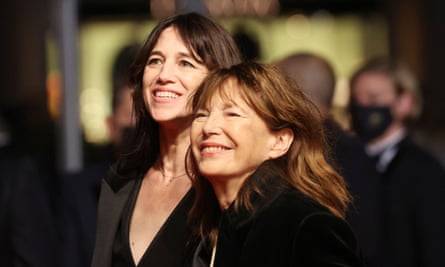
A chronic alcoholic, Gainsbourg died of a heart attack in 1991 aged 62. A few years earlier, he was in the audience to hear Birkin perform her first solo concert at the age of 40 at the Bataclan theatre in Paris.
In 1998 came her first record without Gainsbourg, Á la Légère. But she repeatedly returned to his repertoire, singing his hits around the world accompanied by a full orchestra, including in 2020 in New York where she performed with Iggy Pop.
The English rose of French chanson became something of a national treasure, who preserved the accent that made the French swoon throughout her life and an endearing air of fragility.
Her life was marked by tragedy, with her eldest daughter Kate Barry, a photographer, apparently committing suicide in 2013. She had leukaemia in the late 1990s and in 2021 suffered a minor stroke.
With her flared jeans, mini-dresses and messy bangs, Birkin was the ultimate It girl in the 1970s. In 1984, Hermès named one of its handbags after her. She was made an Officer of the Order of the British Empire (OBE) in 2001 for her services to acting and British-French cultural relations.
Besides Charlotte and Kate, she had another daughter, the singer Lou Doillon, from her 13-year relationship with the French director Jacques Doillon.
RIP Jane
23 notes
·
View notes
Text
the amityville horror (1979), much like the shining (1980) a year later, presents a family moving into a new place that carries evil memories within the fabric of its structure and warps the identities of its new inhabitants to reenact the tragedy it once was scene to. unlike the shining (1980), however, this film does not focus so much on that warping of identity as it does the subtle and uncontrollable interpolation of an enchanted (i.e., haunted) world onto the rational, post-vatican-ii one, which traps the characters between a rational world that no longer gives them credence and an enchanted world that only wishes to do them harm. this interpolation is initially shown through very stark intercuttings, with pieces of the past flung into the present almost as though the house itself has ptsd. the sharpness of the intercuttings—both in terms of the drastic changes in lighting and the lack of any form of sound bridge—keep the enchanted world separated from the rational one; even as the intercut scenes change from flashbacks to present-day incidents, they are still edited in a way that keeps them cleanly separate from the ordinary lives of the family. as the film goes on, though, the enchanted moments expand and the rational contract, isolating the family and whittling away at the “uncontaminated” ordinary spaces in the world of the relatively claustrophobic film. the editing becomes less sharp as well: sound bridges link scenes of safety to scenes of horror, the lighting uniformly dims, and, by the end, a driving, psycho (1960)-inspired soundtrack unites all the shots under one enchanted affect. the amityville horror (1979)’s use of space and affect makes its haunted house plausible, vivid, and effective, even in a thoroughly disenchanted world
21 notes
·
View notes
Text
“The history of relations between the Jewish and Christian communities has been complex and often painful. There were blessed times when the two lived together peacefully, but there was also the expulsion of the Jews from Cologne in the year 1424.
And in the 20th century, in the darkest period of German and European history, an insane racist ideology, born of neo-paganism, gave rise to the attempt, planned and systematically carried out by the regime, to exterminate European Jewry. The result has passed into history as the Shoah.
The victims of this unspeakable and previously unimaginable crime amounted to 11,000 named individuals in Cologne alone; the real figure was surely much higher. The holiness of God was no longer recognized, and consequently, contempt was shown for the sacredness of human life.
This year, 2005, marks the 60th anniversary of the liberation of the Nazi concentration camps, in which millions of Jews - men, women and children - were put to death in the gas chambers and ovens.
I make my own the words written by my venerable Predecessor on the occasion of the 60th anniversary of the liberation of Auschwitz and I too say: "I bow my head before all those who experienced this manifestation of the mysterium iniquitatis. " The terrible events of that time must "never cease to rouse consciences, to resolve conflicts, to inspire the building of peace" (Message for the Liberation of Auschwitz, 15 January 2005).
…
This year also marks the 40th anniversary of the promulgation of the Second Vatican Council's Declaration Nostra Aetate, which opened up new prospects for Jewish-Christian relations in terms of dialogue and solidarity. This Declaration, in the fourth chapter, recalls the common roots and the immensely rich spiritual heritage that Jews and Christians share.
Both Jews and Christians recognize in Abraham their father in faith (cf. Gal 3: 7; Rom 4: 11ff.), and they look to the teachings of Moses and the prophets. Jewish spirituality, like its Christian counterpart, draws nourishment from the psalms. With St Paul, Christians are convinced that "the gifts and the call of God are irrevocable" (Rom 11: 29; cf. 9: 6, 11; 11: 1ff.). In considering the Jewish roots of Christianity (cf. Rom 11: 16-24), my venerable Predecessor, quoting a statement by the German Bishops, affirmed that "whoever meets Jesus Christ meets Judaism" (Insegnamenti, Vol. III/2, 1980, p. 1272).
The conciliar Declaration Nostra Aetate therefore "deplores feelings of hatred, persecutions and demonstrations of anti-Semitism directed against the Jews at whatever time and by whomsoever" (n. 4). God created us all "in his image" (cf. Gn 1: 27) and thus honoured us with a transcendent dignity. Before God, all men and women have the same dignity, whatever their nation, culture or religion.
…
On the basis of our shared human dignity the Catholic Church "condemns as foreign to the mind of Christ any kind of discrimination whatsoever between people, or harassment of them, done by reason of race or colour, class or religion" (n. 5).”
- Pope Benedict XVI, VISIT TO THE SYNAGOGUE OF COLOGNE, 19 August 2005
35 notes
·
View notes
Text



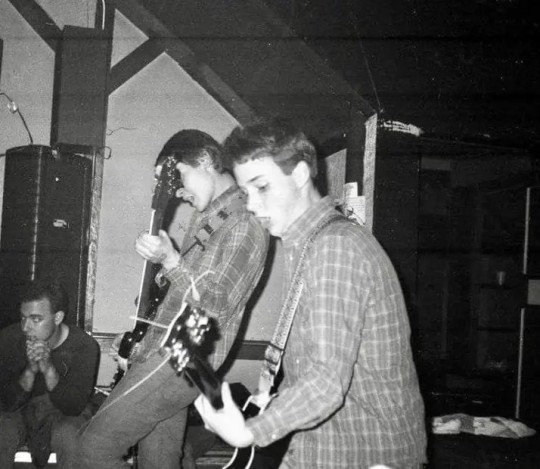
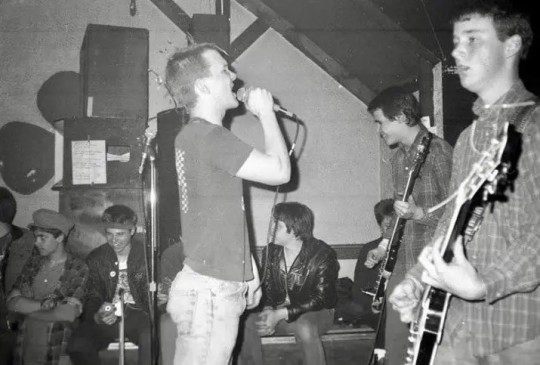
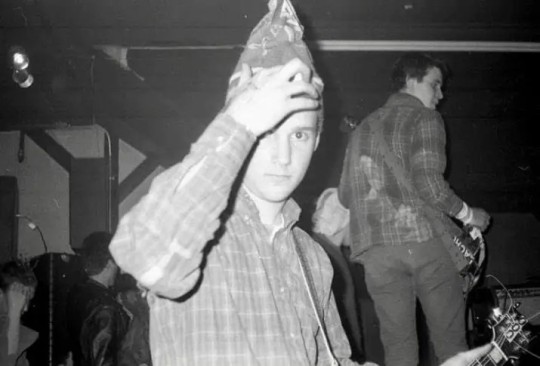
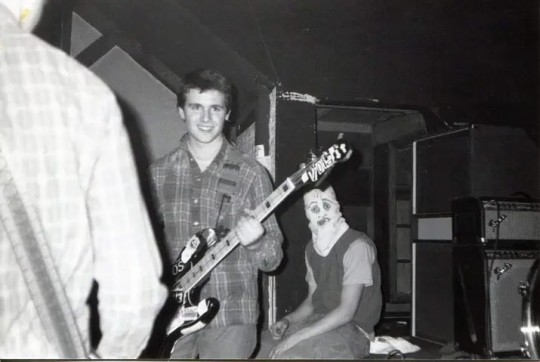


BELATED HAPPY 58th B-DAY TO MOBY -- WHO USED TO PLAY IN A HARDCORE PUNK BAND 40 YEARS AGO!
NOTE: Posting these in honor of Richard Melville Hall (born September 11, 1965), a.k.a., MOBY. 🕯🎈🎂🎸💢 HAIL!!
PIC(S) INFO: Spotlmight on America's own "Hit Squad for God" -- Darien, Connecticut hardcore punk band, VATICAN COMMANDOS, featuring a teenage Moby (a.k.a. Richard Hall) on guitar, performing live at Pogo's in Bridgeport, CT, c. 1983. 📸: Lindsey Anderson.
"Everyone says it tastes good,
It killed off my neighborhood,
You don't know what it's made of…it lasts forever."
-- "Wonder Bread" (1983) by VATICAN COMMANDOS
Source: Two old Facebook posts of mine combined as one huge photo-dump you see above before you.
#VATICAN COMMANDOS#80s hardcore#THE VATICAN COMMANDOS#MOBY#MOBY Artist#80s hardcore punk#Photography#Hit Squad for God EP#VATICAN COMMANDOS band#1980s#THE VATICAN COMMANDOS band#80s#Hit Squad for God#1983#Punk gigs#Punk photography#Guitarist#80s punk#Hit Squad for God 1983 EP#Punk rock#Richard Hall#Hit Squad for God 1983#Hardcore punk#American hardcore#American hardcore punk#Connecticut
1 note
·
View note